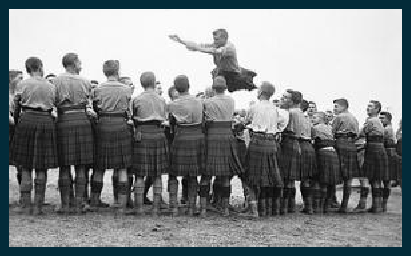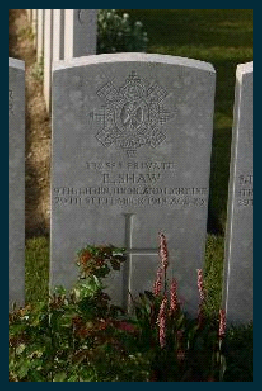Copyright © All rights reserved.



Bertie Shaw
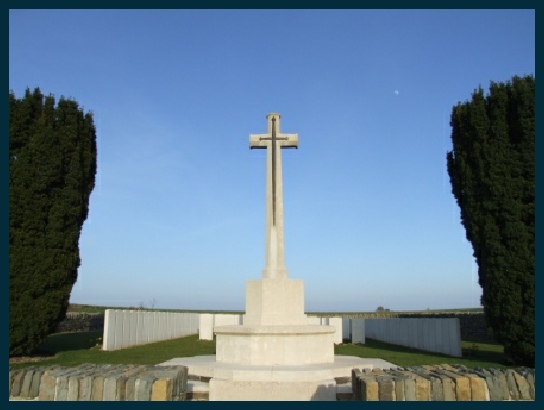
Bertie Shaw was born in Norton in the second quarter of 1895 and his birth registered in Malton. He was the second son of Hebdon and Emma (nee Cousins) Shaw who married in the Malton area in the third quarter of 1885.
Hebdon was a shoemaker (his father Willliam Palliser Shaw gave his occupation as Master Cordwainer in the 1881 Census) and by 1891 was living in Church Street with his wife and three children, Earnest, Ethel and Sydney. The latter two presumably died young as by 1901 Hebdon and Emma had moved to 2 Grove Street, where they were living with two sons, Ernest and Bertie.
1901 Census – resident at 2 Grove Street, Norton
SHAW, Hebdon, Head, Married, M, 37, Shoemaker, Norton Yorkshire,
SHAW, Emma, Wife, Married, F, 39, , Norton Yorkshire,
SHAW, Ernest, Son, , M, 13, , Norton Yorkshire,
SHAW, Berty, Son, , M, 6, , Norton Yorkshire,
At this time Hebdon had a shop at No 13, The Shambles in Malton, and by 1913 he had expanded the business to No. 11 as well.
By 1911 they had moved across the river to Malton and were living at the bottom of Castlegate and Bertie was apprenticed to a cabinet-
1911 Census – resident at 94 Castlegate, Malton
SHAW, Hebden, Head, Married, M, 47, Bootmaker Dealer, Yorkshire East Riding Norton,
SHAW, Emma, Wife, Married 25 years, F, 49, , Yorkshire East Riding Winteringham,
SHAW, Ernest, Son, Single, M, 23, Ironmonger Shop Assistant, Yorkshire Norton,
SHAW, Bertie, Son, Single, M, 16, Cabinet Maker Apprentice, Yorkshire Norton,
For the first two days they were in support role carrying provisions and ammunition between Brigade HQ and the front line, and sustaining a number of casualties, but on the 25th they moved up to the front line. In the early morning of the 26th there was very heavy artillery fire round Battalion HQ which was in a small corrugated iron shelter. During the day the enemy kept putting down bursts of fire on the area and in the afternoon HQ moved and dug in on a bank of a sunken road . On the 27th arrangements were made for a bombing attack to drive enemy out of a pocket of the front trench which they occupied but the attack was cancelled and re-
Brigade orders were issued at 9.50 p.m. on the 28th. The 2nd Worcestershires were to advance along the southern spur, with Pigeon Trench as their objective. The Glasgow Highlanders down the bottom and northern slope of the valley — their objective was Pigeon Trench from its lowest point to Leith Walk on their left. The attacks were therefore slightly divergent, the Worcesters advancing due east, the Highlanders rather northeast. Special platoons were to be detailed by both battalions to get in touch along the sector of Pigeon Trench, about 500 yards, which was not being attacked frontally. On the Highlanders’ left the 98th Brigade was ordered to advance along the northern spur. The advance was to be covered by a creeping barrage by the 33rd Divisional Artillery moving at the rate of one hundred yards in four minutes. There were no heavy guns available, and no tanks. The gap between the Worcestershires and Highlanders was to be covered by machine gun fire, and in addition four machine guns were to advance with each battalion. Close support by trench mortars was provided for and R.E. parties were attached to each battalion to deal with suspected booby traps. When Pigeon Trench was secured, patrols were to be pushed out beyond. The K.R.R.C. was in Brigade Reserve with orders to push down to the canal at Ossu as soon as its passages there were secured.
From the Highlanders’ point of view the task was indeed formidable. An advance down the valley would be liable to direct enfilade fire from both flanks.
By 5.40 pm the battalion was in position, unnoticed by the enemy. In the grey dawn of a misty morning, at ten minutes to six the artillery barrage opened and just before 6.00 they charged the German line killing a few and taking one or two prisoners, the remainder of the garrison running away. The fog at this time was moderately thick. The Highlanders jumped into the trench, bayoneted the garrison and bombed the dug-
On the right the main attack had gone forward simultaneously. The field guns did their best, but the four minutes’ barrage was rather thin. Then the Highlanders advanced through the mist, B and D Companies moving side by side in two lines followed by A Company in section columns. As soon as they showed themselves three advanced machine guns opened fire, The posts were quickly rushed, a few Germans were bayoneted, one or two surrendered, the remainder escaped in the fog. The Highlanders went on, and the centre reached Gloster Road. Both flanks, however, were held up; those on the right by machine gun fire from a trench on the southern ridge, the left by fire from Leith Walk. All available Lewis guns now brought these machine guns’ nests under fire, and the whole line got across Gloster Road.
Casualties up to now were 4 officers and about 80 men. The fog was now thicker, and under its cover the Highlanders continued the advance The few enemy nests directly on the line of advance did not give much trouble as they fled when the line got near them. But those on the flanks who were not directly menaced by the advance kept on firing. The fog was both a blessing and a curse; a blessing because it screened the Highlanders, for the time being, from the murderous fire, a curse because it destroyed the cohesion of the advance yet enabled them to reach an isolated position far beyond the troops on their flanks.
The three companies were now considerably mixed up; indeed as companies they had ceased to exist. The leaders for most of the time could only see a few yards, and could only control. small groups within the range of their vision, but officers and N.C.O’s carried on.
The enemy when met with seldom waited long enough for our men to get to close quarters. with them, but escaped in the fog. The Highlanders in the valley were now in a most precarious position. They could hold on to the position won, or even advance further, as long as the fog lasted, but if it cleared they would almost inevitably be wiped out.
The fog kept on getting thicker all the time which lessened the casualties but made communication difficult and units got separated from the body of the force, and the main force was forced to withdraw. One such isolated unit under Lieutenant Brodie was attacked and cut off by the enemy, most of them were killed or taken prisoner and Brodie only escaped by feigning death.
By 11am All the British advance posts had withdrawn to their original front line and every available man made to stand to in the line expecting attack. The enemy however did not attempt to exploit his success further and the situation became easier. The remainder of the day was spent in organising for defence. During the day the Battalion had sustained about 360 casualties although during the night a few stragglers managed to regain the line and 36 wounded were brought in under bombardment.
During the night enemy machine guns were active all along the front, but at dawn all was quiet. Patrols which were sent forward reported that the enemy had retired. At 11 a.m. the battalion advanced down the Targelle Valley unopposed, and occupied Pigeon Trench, which was found to be a deep well constructed trench protected by wire. Patrols were pushed out in front and the ground up to the canal was found to be clear of the enemy.
The valley was strewn with British dead. The Highlanders as they marched down the valley naturally thought bitterly of the heavy price that had been paid the previous day in their vain endeavour to cross the same ground. Their defeat, however, had really been a victory. The efforts of the 100th Brigade had helped the Fourth Army to break the Hindenburg Line both by drawing fire and reinforcements from the crucial point further south.
It was during this terrible engagement that Bertie Shaw was killed. He is buried at Targelle Ravine British Cemetery in Villers-
Bertie is commemorated on the Town Memorial and in St Leonard's Church as well as on the Northern District St John’s Ambulance Brigader Memorial in Trimdon Station Community Centre.
At some point, presumably before the outbreak of the war, Bertie seems to have served in the Northern District St John’s Ambulance Brigade as he appears along with several other Malton men on the War Memorial in Trimdon Station Community Centre
Bertie enlisted in Malton in the Yorkshire Regiment , presumably when conscription was introduced, and later transferred to the Highland Light Infantry, probably in 1918 after the near annihilation of the 5th Yorkshires.
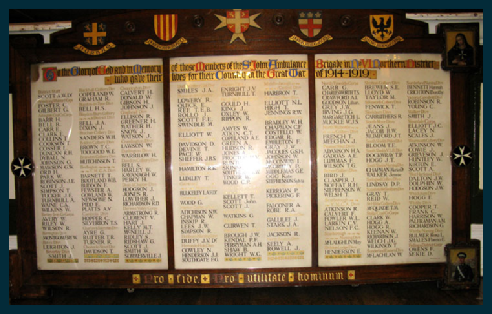
The first draft of 1918 arrived on 16th May when the Battalion was in front line support near Passchendaele. The War Diary records “The reinforcements are of very good physique and should make splendid soldiers.” They moved to the front line three days later, coming under gas and shell attack.
On 23rd March they moved into Ypres coming under further high velocity shell attack until they returned to the front line. Many of the men were suffering severely from trench foot. Here they continued to hold position and patrol the area, sometimes taking German prisoners and repelling occasional German raids only sustaining light casualties.
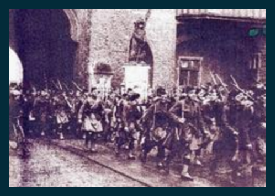
On 4th April the Battalion moved to Red Rose Camp near Vlamertinghe before moving through various camps and billets to the front line near Neuve-
On the 20th April they left the line, moving into a series of camps for drill and training until the end of May when they returned to front line support at Vlamertinghe. During June they returned to the front line sustaining very little in the way of casualties but considerable “wastage” in sickness.
When they were relieved in mid-
Time was found, though, for less dangerous conflicts : “In the afternoon a football match between our Army and the Belgian Army was played near ISENBERG which was attended by both Army Commanders and numerous other Generals. The second (British) Army was represented by a team from the 31st Division. Result: 2 goals to one in favour of the Belgians -
Life continued in this vein through July and August with ever closer co-
